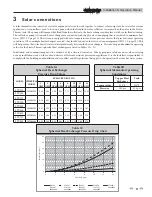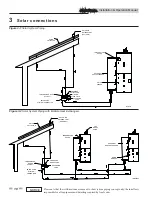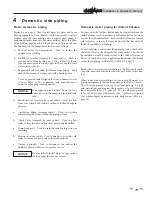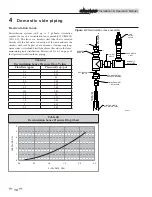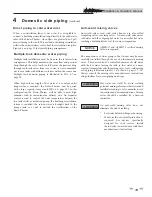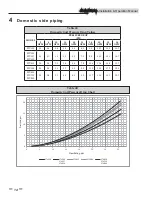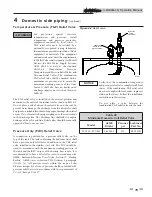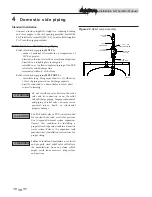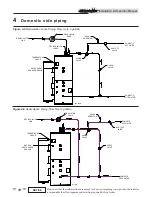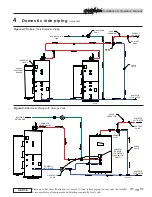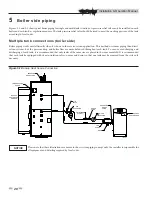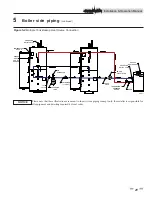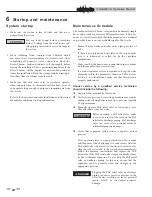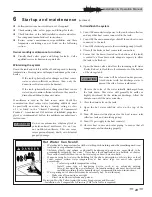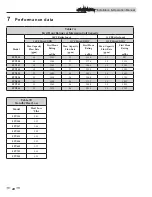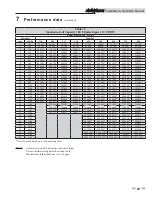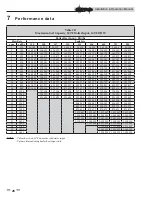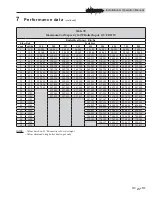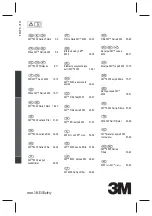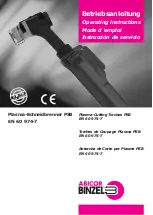
23
6
Startup and maintenance
(continued)
1. Turn OFF main electrical power to the tank, solar collectors
and any other heat source connected to the tank.
2. Turn OFF the main manual gas shutoff for any heat source
connected to the tank.
3. Turn OFF electrical power to the circulating pump (if used).
4. Close off the boiler or heat source inlet connection.
5. Ensure that the drain (located on the bottom of the tank)
is routed to a floor drain with adequate capacity to allow
the tank to be flushed.
To drain/flush the system
CAUTION
Hot water will be released under pressure.
Avoid contact with hot discharge water to
prevent the risk of severe scald injury.
6. Open the drain valve and allow the incoming cold water
“Boiler Return” to flush the soft sediment out of the bottom
of the storage tank.
Installation & Operation Manual
Hot Water Can Scald!
•
Water heated to temperatures for clothes washing, dish washing, and other sanitizing needs can
scald and cause permanent injury.
•
Children, elderly, and infirm or physically handicapped persons are more likely to be
permanently injured by hot water. Never leave them unattended in a bathtub or shower.
Never allow small children to use a hot water tap or draw their own bath.
•
If anyone using hot water in the building fits the above description, or if state laws or local
codes require certain water temperatures at hot water taps, you must take special
precautions:
•
Use lowest possible temperature setting.
•
Install some type of tempering device, such as an automatic mixing
valve, at hot water tap or water heater. Automatic mixing valve must be selected and
installed according to valve manufacturer’s recommendations and instructions.
•
Water passing out of drain valves may be extremely hot. To avoid injury:
•
Make sure all connections are tight.
•
Direct water flow away from any person.
Protection Must Be Taken Against Excessive Temperature and Pressure!
--Installation of a Temperature & Pressure (T&P) relief valve is required.
Owner monthly maintenance to include:
Visually check valves, pipes, and fittings for leaks. Call a
qualified service technician to repair leaks.
Follow instructions on circulator to oil, if required.
Check mixing valve, valves, pipes, and fittings for leaks.
Check function of the field-installed controls and valves.
See component manufacturer’s instructions.
Review owner’s maintenance responsibilities and their
frequencies, including any not listed in the following
section.
•
If the tank, spherical heat exchanger and heat source
water do not contain sufficient antifreeze, they must be
drained in addition to domestic water.
If antifreeze is used in the heat source water, check the
concentration. Heat source water (including additives) must
be practically non-toxic, having a toxicity rating or class
of 1, as listed in the “Clinical Toxicology of Commercial
Products”. A maximum 50/50 mixture of inhibited propylene
glycol is recommended. Follow the antifreeze manufacturer’s
instructions.
WARNING
Do not use automotive, ethylene glycol or
petroleum-based antifreeze. Do not use
any undiluted antifreeze. This can cause
severe personal injury, death, or substantial
property damage.
Winterizing the system
Drain the tank and coil if it will be off and exposed to freezing
temperatures. Freezing water will expand and damage the water
heater.
•
If the tank, spherical heat exchanger and heat source
water contain sufficient antifreeze, then only the
domestic coil water needs to be drained.
7. Observe the color of the water initially discharged from
the tank drain. This water will generally be milky or
slightly discolored by the sediment discharge. Allow the
drain to run until the water runs clear.
8. Close the drain valve on the tank.
9. Open the hot water relief/air valve on the top of the
tank.
10. Turn ON main electrical power for the heat source, solar
collectors, tank and circulating pump.
11. Turn ON gas supply to the heat source(s).
12. Observe heat source and solar piping to ensure that all
components are functioning properly.

